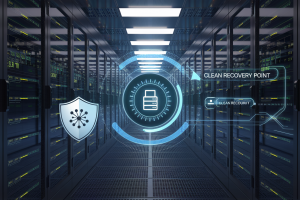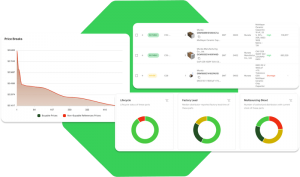Can Infor’s aversion to datacenters beat SAP’s secure approach to apps? |#Inforum2014
![]() Infor Inc.’s datacenter-averse approach makes it a potential SAP SE challenger, said Vinnie Mirchandani, the Owner of Deal Architect. At the Inforum 2014 conference, he sat down with Dave Vellante and Jeff Kelly on theCUBE to talk about his predictions for Infor and their established competitor, SAP SE.
Infor Inc.’s datacenter-averse approach makes it a potential SAP SE challenger, said Vinnie Mirchandani, the Owner of Deal Architect. At the Inforum 2014 conference, he sat down with Dave Vellante and Jeff Kelly on theCUBE to talk about his predictions for Infor and their established competitor, SAP SE.
Based on the keynotes and briefings in which he participated, Mirchandani called out several key points that differentiate Infor from its competitors. The first was Infor’s dynamic performance management, which he considers unique in the Enterprise Resource Planning (ERP) industry. User experience (UX), said Mirchandani, is another a distinguishing factor. It moves away from traditional forms-based enterprise software. Mirchandani also touched on Infor’s datacenter strategy, which is essentially to have no datacenter. All their infrastructure comes through Amazon.com, Inc.’s Amazon Web Services (AWS). Since Infor doesn’t have to work on datacenter security or maintenance, it gives them time to develop a better UX, and pour investment into the application side.
Targeted solutions are a good move
According to Mirchandani, the industry is undergoing a sea of change in integrated solutions, which is swinging back towards targeted solutions. It’s “not a bad strategy,” Mirchandani said, because customers will pay a premium for that type of customized solution.
Integration is necessary
When it comes to integration, though, Mirchandani describes Infor’s middleware strategy as “a work in progress.” Integration is necessary, he observes, because no single app vendor can provide the complete portfolio that companies need. And integration is becoming especially essential as industries across the board begin to look for next-generation, omni-channel applications.
In terms of its Big Data strategy, Infor is in a similar situation because “no single vendor can do it all,” as Mirchandani noted. Data science, he went on, helps when it comes to selling Big Data. Because Infor uses AWS for its cloud infrastructure, its data scientists can leverage those tools that enable new insights and deliver intelligence. Infor, Mirchandani commented, could help a hotel chain optimize efficiencies based on guest demographics, or could help hospital staff monitor their patients.
Read more after the video.
Coming out on top of SAP
Infor’s micro-targeted applications, among other features, make it a competitor against the much larger SAP. Though this rival is a well-established company, SAP has been “enamored with platforms” in recent years,” said Mirchandani, which led them to drift from the dominant application area. Though SAP is returning to an app-centric focus, it lost intensity, said Mirchandani, citing that customers are frustrated because they need “to go to third party vendors to make SAP work.” SAP’s new user interface, he added, is “a little late.”
Examining Infor’s potential to disrupt SAP
In fact, Mirchandani’s fourth and most recent book is based on his model around the SAP economy built earlier this year. The impetus for this book asked, “How big is the SAP nation?” In his model, Mirchandani “dollarized” the SAP economy at $2 billion a year — a worthy number even when SAP is distracted and not growing dramatically.
The first half Mirchandi’s is book is a root cause analysis of how the SAP economy became so big. The other half consists of coping strategies. It identifies four different types of SAP customers:
– Unadopter: Customers moving away from SAP
– Diversifyers: Customers putting other tech around SAP
– Pragmatic SAP customer: Customers who are not happy with outsourcing or SAP’s changing model, which Mirchandani describes as more eco system than SAP
– Double-downers: Customers who committed to HANA, who are SAP believers
.
For Infor, Mirchandani said his findings mean the company has an opportunity with at least two groups of SAP customers — the Unadopters and Diversifyers, because AWS makes Infor so much cheaper. Because SAP owns its data systems, it’s worried about the competition’s ability to slash prices. While SAP is wary of costs, Mirchandani explained that owning its own data center enabled it to learn and put pressure on the system. Now, Mirchandani said, SAP has to emphasize that owning its own data center enables data privacy and security.
Infor has the potential to be disruptive, and to pick up SAP customers, because it “learned from SAP’s mistakes,” said Mirchandani, and is using those learnings to create a new web standard.
A message from John Furrier, co-founder of SiliconANGLE:
Your vote of support is important to us and it helps us keep the content FREE.
One click below supports our mission to provide free, deep, and relevant content.
Join our community on YouTube
Join the community that includes more than 15,000 #CubeAlumni experts, including Amazon.com CEO Andy Jassy, Dell Technologies founder and CEO Michael Dell, Intel CEO Pat Gelsinger, and many more luminaries and experts.
THANK YOU









